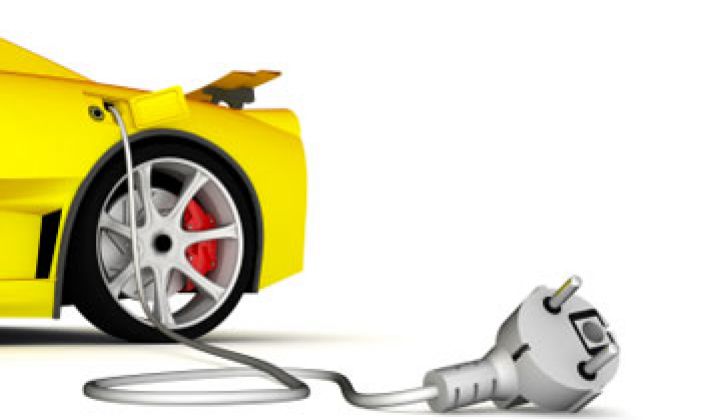It's been nearly a year now since modern electric vehicles really hit the mainstream with the release of the Chevy Volt and Nissan Leaf to complement offerings from niche automakers like Tesla. A year on, what's changed in the EV sector? Well, not a whole lot, but the market is growing.
Battery performance remains a big issue for potential EV buyers. But range anxiety may be waning, as the BEV Leaf had outsold the PHEV Volt by nearly 3,000 units as of October. In either case, supporting infrastructure is a key to success, in the form of available high-voltage charging stations to limit downtime for drivers. We must say, however, that vast networks of charging stations are likely not the end-all solution to boosting EV popularity.
We've covered a number of interesting new EV initiatives from around the country this year. Let's take a look back, as they are all good case studies concerning the rollout of newfangled infrastructure tech.
5. Walgreens' Push for DC Charging
As much as an advertising boon as it may be, charge stations installed by retailers don't offer much to customers. Even a Level 2, 240V charger still takes around four hours to charge the average EV, which means a minimal top-up for all but the lengthiest shopping trips.
Walgreens, which already has installed 800 charging stations and counting, has thus made 480V DC charging a priority. DC chargers can provide a full charge in as little as 15 minutes, which means a single shopping trip could also mean a full battery. At the moment, the company plans on installing 150 DC stations nationwide, a number severely hampered by the power infrastructure.
4. Texas' Freedom Charging Network
NRG Energy in Texas opened its first eVgo Freedom Station in April, which included a high-speed DC charger. The privately funded network aims to have 70 stations in Dallas/Fort Worth and 50 stations in Houston in its first rollout, all of which will be equipped with DC chargers. Once the network is in place, drivers in either city will never be more than five minutes from a station, as long as they stick within the city limits.
The price of speedy charging -- NRG claims its DC chargers add 30 miles of range in 10 minutes -- is a flat monthly fee of $49 to $89, with the $89 package being basically an unlimited plan. That includes access to chargers at home and on the road, which essentially means a flat fee every month for commuters that's far less than the estimated $169 monthly gas bill the average U.S. driver pays.
Success for the alternative fuel vehicle sector, including electrics, lies in their adoption in fleets. One potential opportunity that is being explored by Maui is the rental fleet. The Maui Electric Vehicle Alliance launched in November to start designing a plan to integrate increased EV infrastructure development with a push for a larger EV rental fleet.
It's an interesting case that seems relatively ideal for EV adoption: a small region populated with EVs driven by tourists, who may be less worried about day-to-day range anxiety. The rental fleet also provides a nice sink of early adopters, who can bear the brunt of upfront costs, eventually allowing locals to take advantage of cheaper used EV prices and a more mature infrastructure.
2. The Air Force Goes Electric, Starting in California
The U.S. Air Force announced this year that it would switch 100 percent of its non-tactical vehicles to EVs and PHEVs. That's a massive fleet to fill, and it offers the chance for EVs to gain a strong institutional foothold. The transition will begin at the Los Angeles Air Force Base. All 43 non-tactical vehicles on the base will be replaced with EVs or PHEVs in January 2012, to the tune of $750,000.
The L.A. base was particularly ready for the switchover, because it has its own 500-kilowatt solar system and is already plugged into an advanced smart grid. The Air Force hopes to answer two questions with the pilot. First, and most obviously, can the machine keep running when it relies solely on electric power? Secondly, what will the impact of vehicle-to-grid (V2G) technology be on the availability of power from the grid and from renewable sources? As to the latter question, the Air Force already expects that V2G has enormous potential for frequency regulation on its grid.
The Pecan Street smart grid test in Austin is certainly the most ambitious EV-solar-smart-grid integration project in the United States. The goal of the project is to get EVs, rooftop solar, smart appliances and even household batteries all communicating to try to shape peak loads, ease strain on the grid, and hopefully save everyone a bit of cash.
Chevy has gotten in on the plan, announcing that by the middle of 2012, it will make 102 Volts available to people living in the 172-home test area. The cars will come with double the current $7,500 federal rebate to try to boost sales. It will likely represent the largest non-fleet concentration of EVs in the country, which will offer valuable data regarding use, grid strain and even basic things like how long the wait will be at available charging stations. Combined with a push to optimize solar for the conflicting needs of EV charging, battery storage and regular old grid supply, the Pecan Street initiative will provide a number of valuable answers regarding what it's really like to live the greentech dream.



